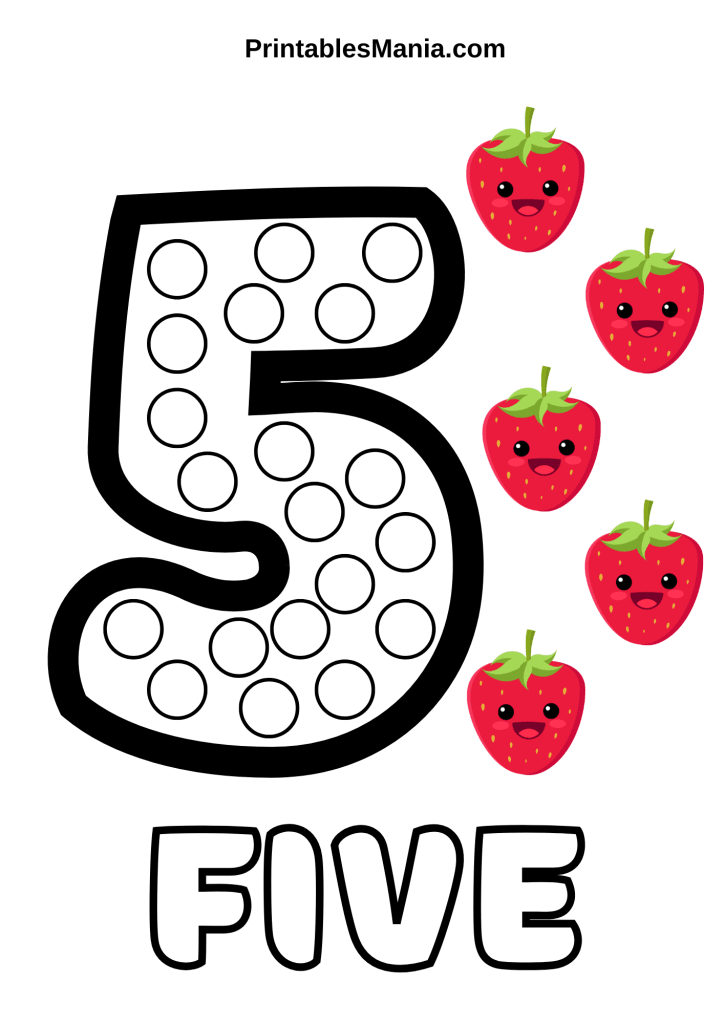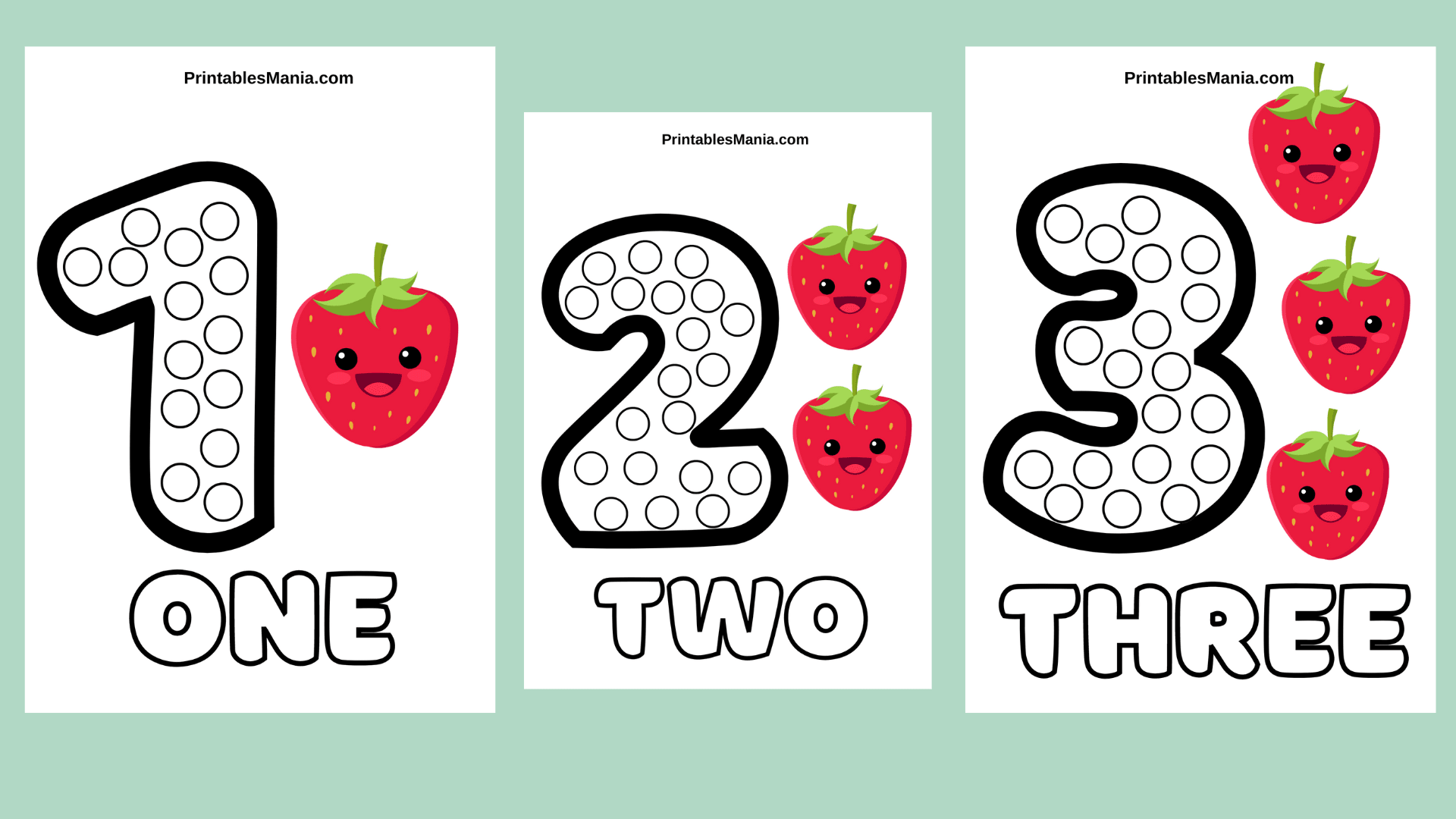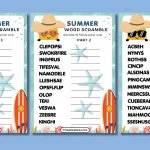Introduce your little ones to the exciting world of numbers with our engaging Do-A-Dot Number Printables! These fun and interactive activities are designed to help preschoolers, kindergarteners, and young learners recognize, identify, and explore numbers hands-on.
Our Do A Dot Number Printables combine the excitement of using bingo daubers or dot markers with the educational benefits of learning about numbers. As children fill in the dots within each number outline, they develop essential fine motor skills, hand-eye coordination, and an understanding of numerical order.
These printable worksheets reinforce number recognition and encourage creativity and self-expression. Children will love watching the numbers come to life with vibrant colors while learning to appreciate the beauty of the numeric system.
Perfect for use in the classroom, at home, or in homeschool settings, our Do A Dot Number Printables are easy to set up and require minimal materials. They provide a fun and engaging way to introduce and reinforce early math concepts, laying the foundation for future learning.










Educational Benefits of Do A Dot Number Printables
Do A Dot Number Printables are not just fun activities for kids; they offer several significant educational advantages that can aid in early childhood development. Here’s how these printables can benefit young learners:
Number Recognition
- Visual Learning: These activities help children recognize and differentiate numbers visually. Coloring distinct dots within the shapes of numbers helps solidify their understanding of numerical symbols.
- Sequential Learning: By following numbered dots, children learn the correct sequence of numbers, which is foundational for more advanced math skills.
Fine Motor Skills Development
- Hand-Eye Coordination: Using Do A Dot markers or placing small objects like stickers or pompoms on specific spots requires precise movement, which enhances hand-eye coordination.
- Dexterity Improvement: The action of picking up and placing markers or small items builds hand muscles and improves fine motor dexterity, essential for writing and other academic tasks.
Counting Practice
- Active Engagement: As children dot each number, they count aloud or mentally, which reinforces learning through active participation.
- Concrete Learning: Physically marking each dot with a color makes the abstract concept of numbers more tangible and understandable for young minds.
Cognitive Development
- Pattern Recognition: Children can begin to recognize patterns in numbers and their arrangements, an early math skill that supports later mathematical reasoning.
- Problem Solving: Working through which color to use and how to complete the pattern requires basic problem-solving skills, encouraging cognitive flexibility.
Tips for Parents and Teachers
Utilizing Do A Dot Number Printables effectively can enhance learning experiences and make education both fun and impactful. Here are some tips for parents and teachers to maximize the use of these resources:
Integration into Daily Routines
- Incorporate into Play: Turn number learning into a game. For instance, ask children to dot numbers on a page in response to questions about their environment (e.g., “How many chairs are there?”).
- Routine Activities: Include these printables as a regular part of the daily or weekly routine, making them a fun and anticipated activity.
Encouragement and Support
- Positive Reinforcement: Always provide positive feedback and celebrate when a child completes a number page, especially if they recognize or learn a new number.
- Adjust Challenges: If a child finds a particular number difficult, use additional resources or tools like number songs or videos to help reinforce learning in different ways.
Progress Tracking and Assessment
- Create a Progress Chart: Design a visual progress chart where children can add a sticker or mark each time they complete a number. This visual representation of their achievements can boost motivation.
- Assess Understanding: Periodically, ask children to identify numbers without the dots or in different contexts to assess their understanding and retention.
Creative Use of Materials
- Variety of Tools: Encourage the use of different tools like finger paints, stamps, or even homemade dot markers to keep the activities exciting and new.
- Mix and Match Activities: Combine number printables with other educational themes, such as colors, shapes, or letters, to enhance overall learning.
Clean-Up and Organization
- Preparation for Mess: Especially when using paints or ink, prepare your workspace with coverings and have cleaning materials handy.
- Organize Resources: Keep all necessary materials organized and accessible to make setting up and cleaning up as smooth as possible.
By following these tips, parents and teachers can effectively utilize Do A Dot Number Printables to foster an enjoyable and educational environment that promotes early learning and development.







